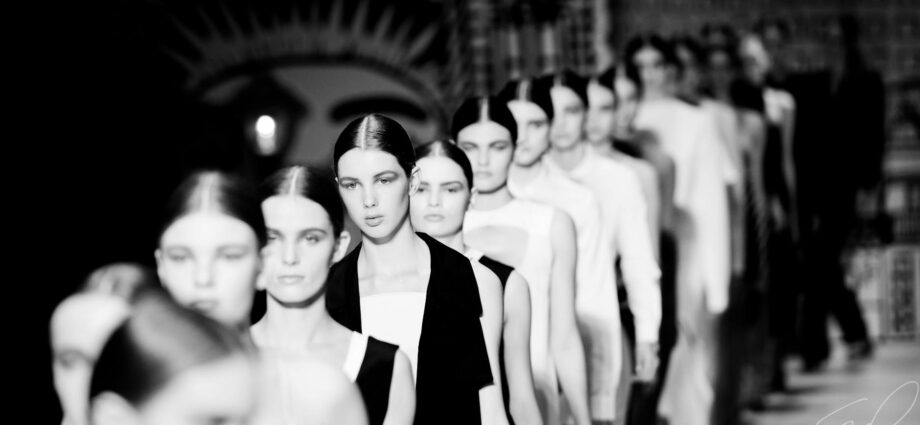The fashion industry has witnessed a unexpected shift in the past few years, with the rise of slow fashion and the decline of fast fashion! I personally couldn’t be happier about this transformation. In 2009, when I was asked about my dissertation topic, I chose to explore the negative impact of fast fashion on the industry. Little did I know that a decade later, slow fashion would emerge as a powerful movement that resonates with consumers worldwide. In this article, we will delve into the world of slow fashion, its benefits, and why it’s a trend worth embracing.
The Rise of Fast Fashion influenced by ZARA
Fast fashion took the industry by storm, revolutionising the traditional fashion process ( The Trickle Down Effect). Zara, a leader in fast fashion, introduced a system that recreated the latest catwalk trends in record time. No longer did the public have to wait months to a year for catwalk styles to become available in stores. Zara’s rapid production cycle set the bar high and forced other high street stores to pick up the pace. All Saints and Topshop followed suit, ensuring that consumers always had access to the latest trends.

The Era of Cheap Fashion
Another key player in the fast fashion phenomenon was the rise of shops like Primark and H&M. These brands introduced what I like to call “Pay as you go Fashion!” By offering affordable prices, they made it easy for students and young people to keep up with the latest trends.
However, the cheap prices came at a cost. The poor quality of these garments meant that they were often worn only a few times before being discarded. This throw-away fashion culture had a significant environmental impact.
Embracing Quality over Quantity
Fast fashion is generally of low quality because it is made so rapidly. The consumer hasn’t had an issue with this because they frequently move on to the newest trend.
The slow fashion movement represents a fundamental shift in our mindset towards more sustainable and ethical practices. It encourages us to re-evaluate our choices opting for long lasting quality over quantity,
The issue has not only been with the catwalk impersonations and their quality. As was already established, there is a lot of fashion waste. However, the creation of fast fashion is also associated with unethical practises and environmental problems, which makes it necessary to support firms that place a high priority on equitable pay, secure working conditions, and ecologically responsible production techniques. Purchasing classic, long-lasting, well-made items is the essence of slow fashion. By doing this, we may create a wardrobe that not only captures our individual style but also endures.
The Benefits of Slow Fashion
There are numerous benefits to embracing slow fashion:
- Sustainability: Slow fashion promotes a more sustainable approach to clothing consumption. By investing in high-quality garments, we reduce the need for constant replacements, thus minimizing our environmental impact.
- Ethical Production: Slow fashion brands prioritize fair wages and safe working conditions for their employees. This ensures that the people behind our clothes are treated with dignity and respect.
- Preservation of Craftsmanship: Slow fashion celebrates traditional craftsmanship and artisanal skills. By supporting these artisans, we help preserve their unique talents and contribute to the cultural heritage of fashion.
- Individuality: Slow fashion encourages us to embrace our individual style and express ourselves authentically. Instead of chasing fleeting trends, we focus on curating a wardrobe that truly reflects who we are.
The Trickle Up Effect: Rediscovering Authenticity
Interestingly, the rapid pace of fast fashion led to a fascinating phenomenon known as the trickle-up effect. As fashion trends moved at an exhilarating pace, people started looking to the streets for inspiration and began developing their own individual styles. This shift brought back an authenticity that had been somewhat lost in the world of fast fashion. It reminded us of the power of fashion to express our true selves and ignited a renewed passion for personal style.
Slow Fashion is a Fashionable and Responsible Choice
In the era of social media, where the constant overflow of information can leave us confused about the latest trends, slow fashion offers a refreshing approach. It encourages us to dress based on how we feel rather than blindly following trends. Slow fashion is about making conscious choices that align with our values and having a positive impact on the planet.
The Role of Designers
The rise of slow fashion has prompted designers to rethink their approach to design. They are stepping back and introducing new ways of making clothes, such as using fabrics from alternative sources that are more sustainable. Designers are collaborating with scientists and innovators to develop groundbreaking ideas that redefine the fashion industry. This shift not only benefits the environment but also opens up a whole new world of creativity and innovation.
A Sustainable and Stylish Future
The rise of slow fashion is a positive step towards a more sustainable and responsible fashion industry. By embracing slow fashion, we can contribute to a better world, where quality and craftsmanship are valued over quantity. It’s time to bid farewell to fast fashion and embrace a future where fashion is not only stylish but also mindful of its impact. So join me in celebrating the slow fashion movement and let’s create a wardrobe that reflects our values and stands the test of time.


